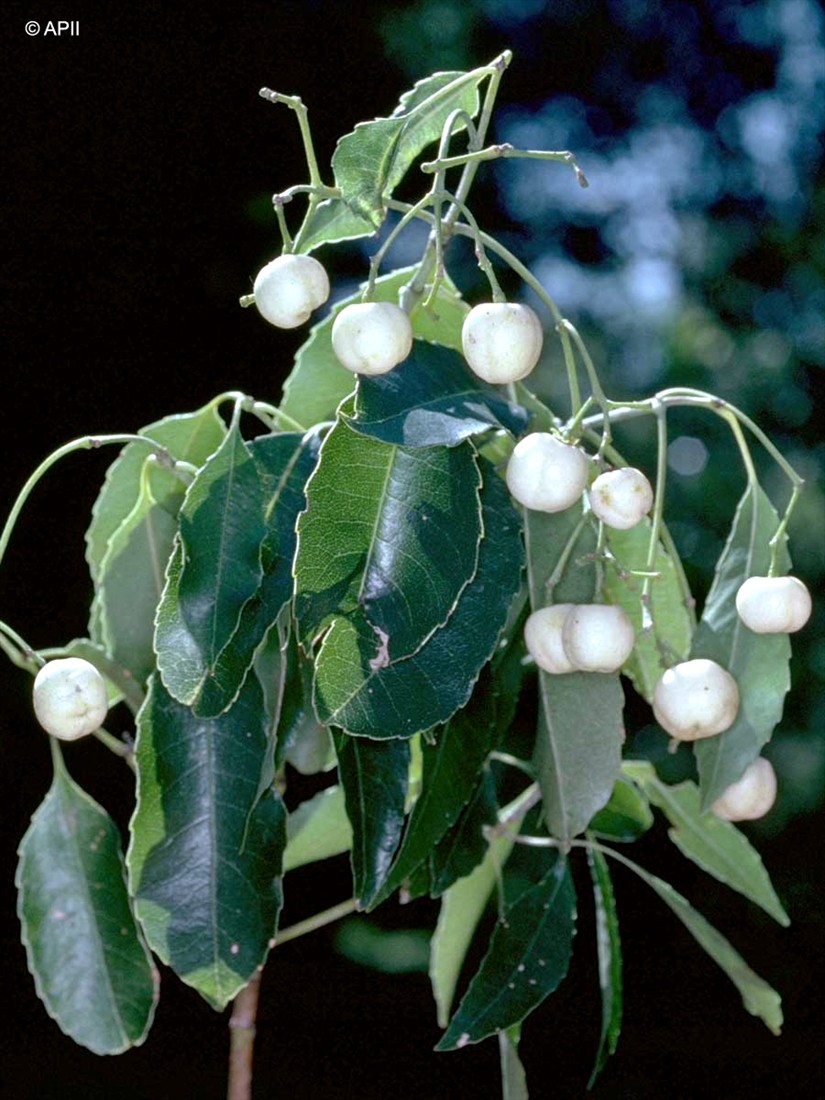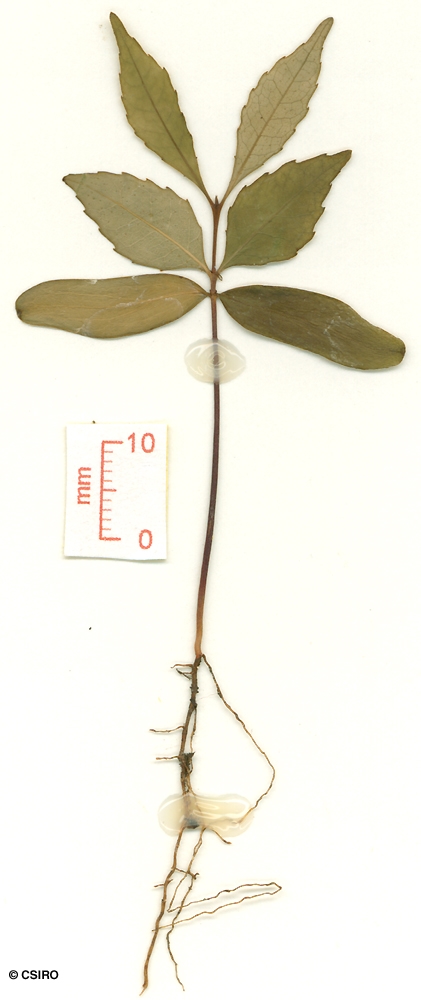Australian Tropical Rainforest Plants - Online edition
Schizomeria ovata D.Don




Don, D. (1830) Edinburgh New Philosophical Journal 9 : 95. Type: In Novae Hollandiae, Georgius Caley. (v.s.sp. in Herb. Lamb.).
Cherry Birch; Birch, White; Coach-wood; Corkwood; Crabapple; Humbug; Lightwood; New South Wales White Ash; Snowberry; Squeaker; White Birch; White Cherry; Cherry, White
Dark, almost black flecks may be visible in the blaze.
Inflorescence many flowered, approximating or exceeding the leaves. Calyx lobes about 2.5 mm long. Petals about 2.5 mm long, apex with three or four narrow lobes about 0.5 mm long. Stamens ten, staminal filaments about 1.5 mm long, inserted outside the 10-lobed disk. Ovary apex glabrous.
Cotyledons narrowly elliptic, apex rounded, about 20 x 6 mm. Petiole very short or nil. At the tenth leaf stage: leaves elliptic, apex acuminate, base attenuate, margins serrate, midrib raised on the upper surface; stipules interpetiolar, about 2 mm long. Seed germination time 480 days.
Endemic to Australia, occurs in NEQ, CEQ and southwards to south-eastern New South Wales. Altitudinal range in NEQ from 600-800 m. Grows in rain forest and also as an understory tree in wet sclerophyll forest.
Seldom grows large enough to produce a millable log in northern Queensland but does so further south.
Produces a useful cabinet timber and general purpose timber.
Wood specific gravity 0.64. Cause et al. (1989).





